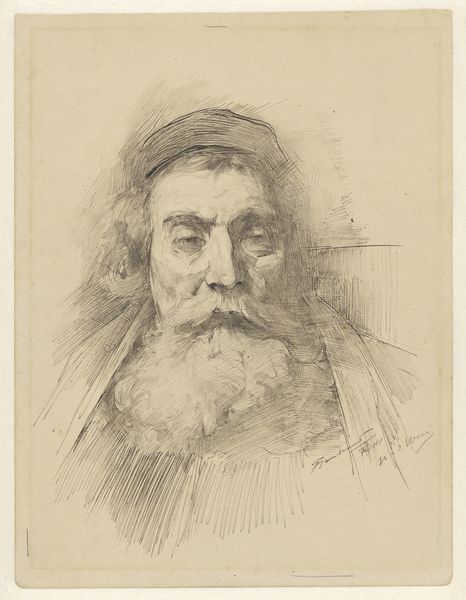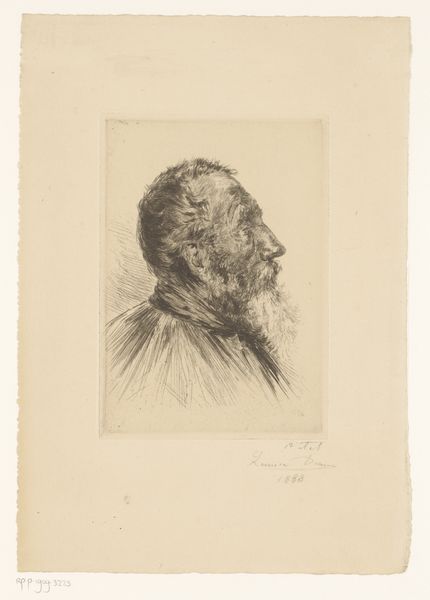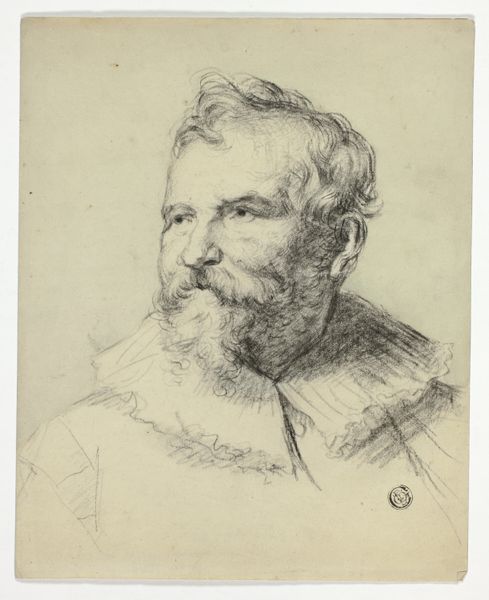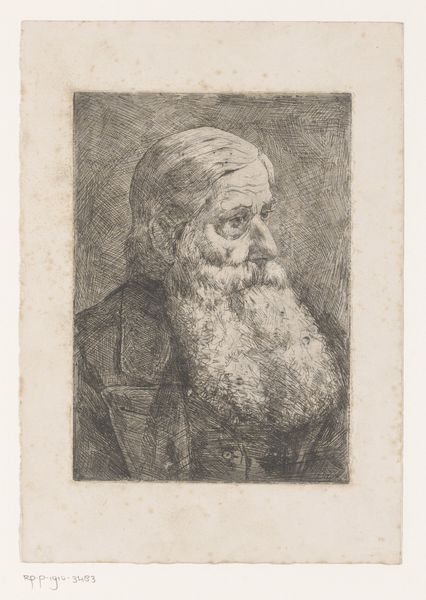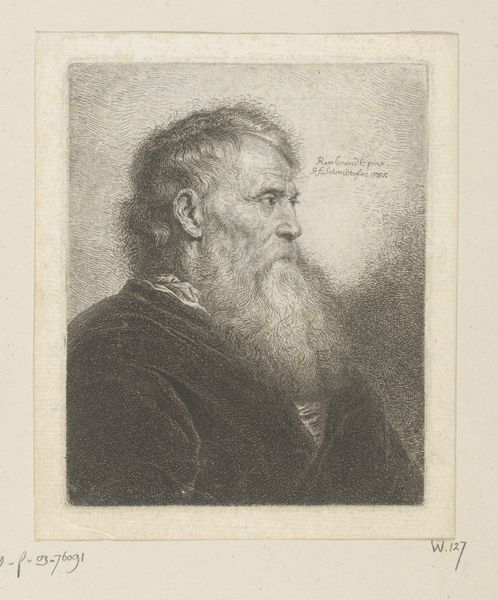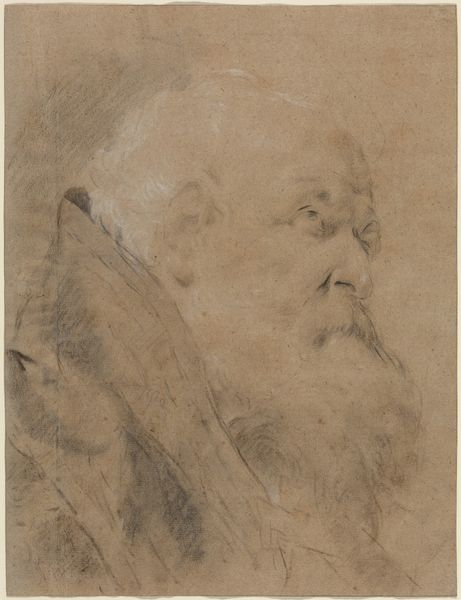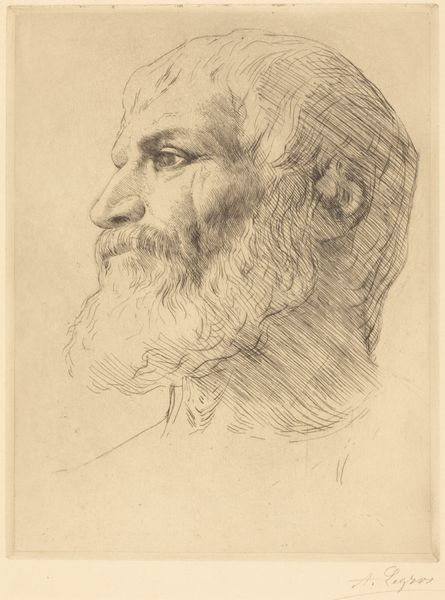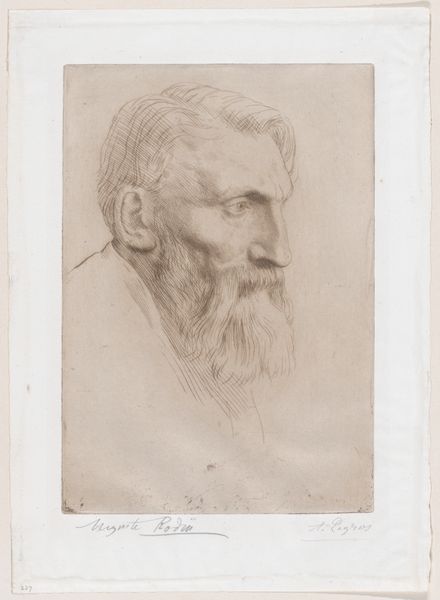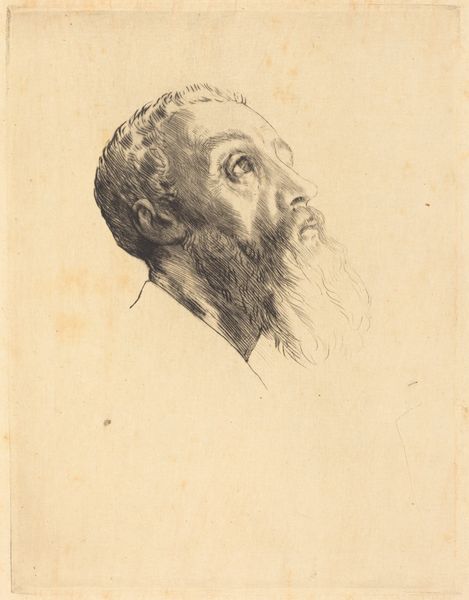
drawing, ink, engraving
#
portrait
#
pencil drawn
#
drawing
#
pencil sketch
#
charcoal drawing
#
ink
#
pencil drawing
#
line
#
engraving
#
realism
Copyright: Public domain
Curator: This delicate portrait of Auguste Rodin is an engraving, done in 1922 by Paul-Albert Besnard. The lines are so fine; it almost looks like a pencil drawing. Editor: There's a softness despite the precise rendering, wouldn’t you say? The gaze is averted, almost wistful. And his great, flowing beard—it gives him such a biblical presence. Curator: Absolutely. You know, looking closely at the way Besnard uses the engraving tools, I am reminded of the etching revival underway at this moment. There’s a return to the craft of printmaking apparent here; consider how Besnard, so taken with his subject, focuses less on innovation of new techniques than refining a skill to properly encapsulate this fellow artist. Editor: Speaking of subject, the beard functions symbolically; think of its association with wisdom, virility, artistic gravitas. It’s framing, almost announcing Rodin's cultural significance, as both sage and powerful creator. Curator: But the looseness of the lines too. Look at the almost haphazard quality behind the head. It gives us a peek into Besnard's process and choices in rendering his fellow artist’s form. The labor here is of someone who already possesses the requisite knowledge; Rodin clearly feels familiar and accessible to him. Editor: You’re right to point to the apparent ease. It feels so immediate and raw, less about formal portraiture, more about capturing a fleeting essence. He’s presented as the quintessential artist, lost in thought. Curator: Right. And even the choice of engraving aligns. The medium itself has a kind of historical weightiness to it that other methods perhaps don’t have, given its ties to widespread consumption throughout history. There’s a historical value present within both process and form. Editor: It also presents him bathed in a light of contemplation. We're privy to his interiority through the deliberate deployment of symbols. And consider that downturn of the mouth, alluding to potential sorrow. Besnard subtly shows us the man beyond the myth. Curator: In the end, I keep returning to what Besnard sought to showcase by way of artistic and printing traditions in service of highlighting the materiality of the moment he shared with Rodin, in that specific space and time. Editor: For me, it’s a testament to how potent a simple image, pregnant with cultural and symbolic resonance, can be, echoing far beyond its initial creation.
Comments
No comments
Be the first to comment and join the conversation on the ultimate creative platform.
